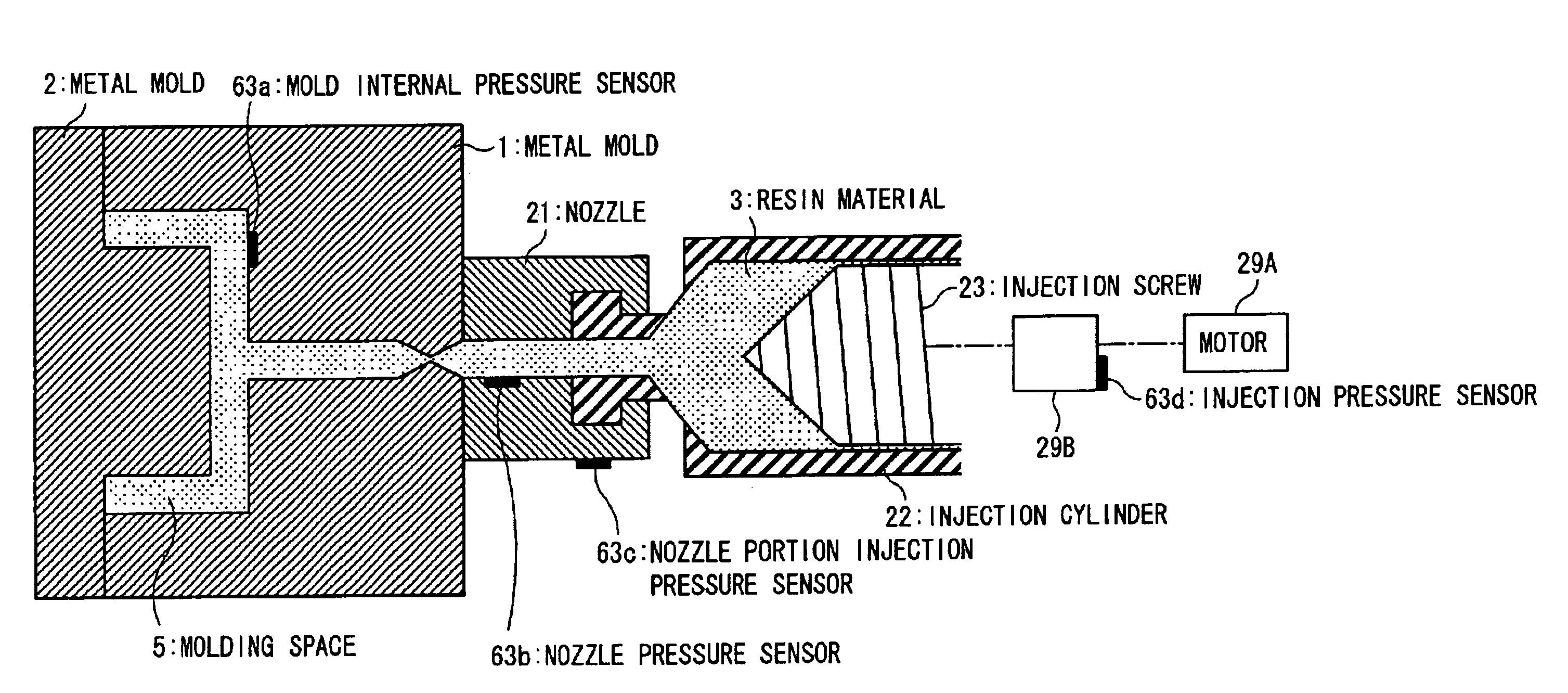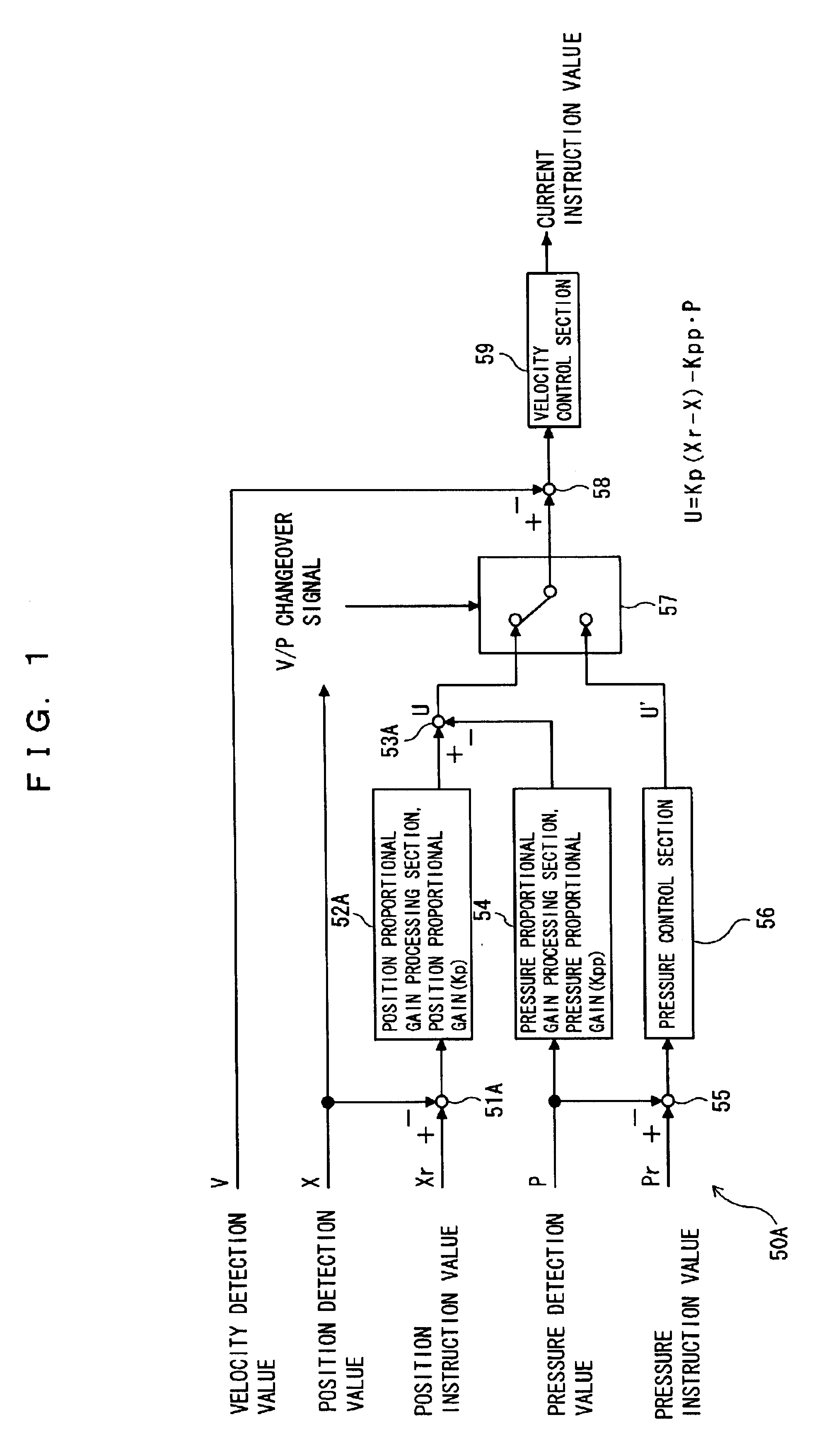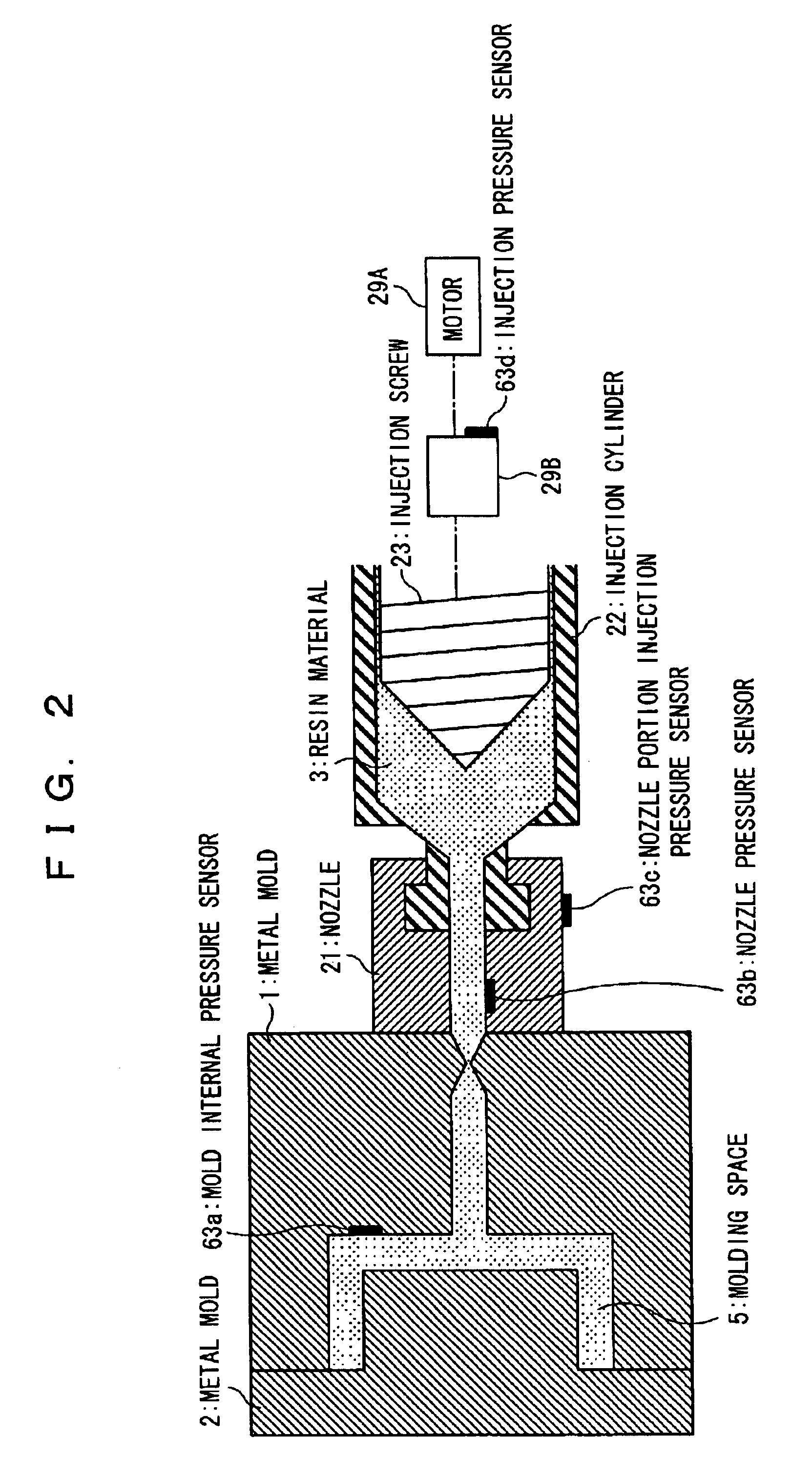Electric injection molding machine for controlling injection speed and injection pressure of electric injection molding machine
a technology of injection molding machine and injection pressure, which is applied in the direction of auxillary shaping apparatus, manufacturing tools, food shaping, etc., can solve the problems of unstable resin state, unstable control, and unstable instruction value used for pressure control
- Summary
- Abstract
- Description
- Claims
- Application Information
AI Technical Summary
Benefits of technology
Problems solved by technology
Method used
Image
Examples
first embodiment
[1] Description of the First Embodiment
First, an electric injection molder according to a first embodiment of the present invention is described. FIG. 1 is a control block diagram of a forward and backward driving system for an injection screw of the electric injection molder, and FIG. 2 is a schematic sectional view showing a nozzle of the injection screw. It is to be noted that, since the electric injection molder is configured similarly to the prior art shown in FIGS. 9(a) to 9(c) and 10(a) to 10(c) except the back and forth driving system for the injection screw, simplified description of the same is given.
First, a general configuration of the electric injection molder is described. As shown in FIGS. 9(a) to (c) and 10(a) to 10(c), the injection molder shown includes a mold closing apparatus 10 for stacking two metal molds 1 and 2, and an injection apparatus 20 for injecting and supplying raw resin (resin material) 3 into a space formed between the metal molds 1 and 2.
The mold c...
second embodiment
[2] Description of the Second Embodiment
Now, an electric injection molder as a second embodiment of the present invention is described. FIG. 3 is a control block diagram of a forward and backward driving system for an injection screw of the electric injection molder. It is to be noted that, since the present electric injection molder is configured similarly to that of the first embodiment except part of the control apparatus (velocity control system), description thereof is omitted or simplified.
According to the control apparatus 50B of the present embodiment, the velocity control system in the present embodiment uses a velocity instruction value Vr and a velocity detection value V while the velocity control system in the first embodiment uses the position instruction value Xr and the position detection value X.
In particular, the velocity control system in the present embodiment includes an adder 51B for subtracting a velocity detection value V from a velocity instruction value Vr t...
third embodiment
[3] Description of the Third Embodiment
Now, an electric injection molder as a third embodiment of the present invention is described. FIG. 4 is a control block diagram of a forward and backward driving system for an injection screw of the electric injection molder. It is to be noted that, since the present electric injection molder is configured in a similar manner to those of the first and second embodiments except part of a control apparatus (except a velocity control system), description of it is omitted or simplified.
In the control apparatus 50C in the present embodiment, the velocity control system is a combination of that in the first embodiment and that in the second embodiment.
In particular, the velocity control system in the present embodiment includes an adder 51A for subtracting a position detection value X from a position instruction value Xr to calculate a position deviation (=Xr−X), a position proportional gain processing section 52A for multiplying the position deviat...
PUM
| Property | Measurement | Unit |
|---|---|---|
| Current | aaaaa | aaaaa |
| Pressure | aaaaa | aaaaa |
| Shrinkage | aaaaa | aaaaa |
Abstract
Description
Claims
Application Information
 Login to View More
Login to View More - R&D
- Intellectual Property
- Life Sciences
- Materials
- Tech Scout
- Unparalleled Data Quality
- Higher Quality Content
- 60% Fewer Hallucinations
Browse by: Latest US Patents, China's latest patents, Technical Efficacy Thesaurus, Application Domain, Technology Topic, Popular Technical Reports.
© 2025 PatSnap. All rights reserved.Legal|Privacy policy|Modern Slavery Act Transparency Statement|Sitemap|About US| Contact US: help@patsnap.com



